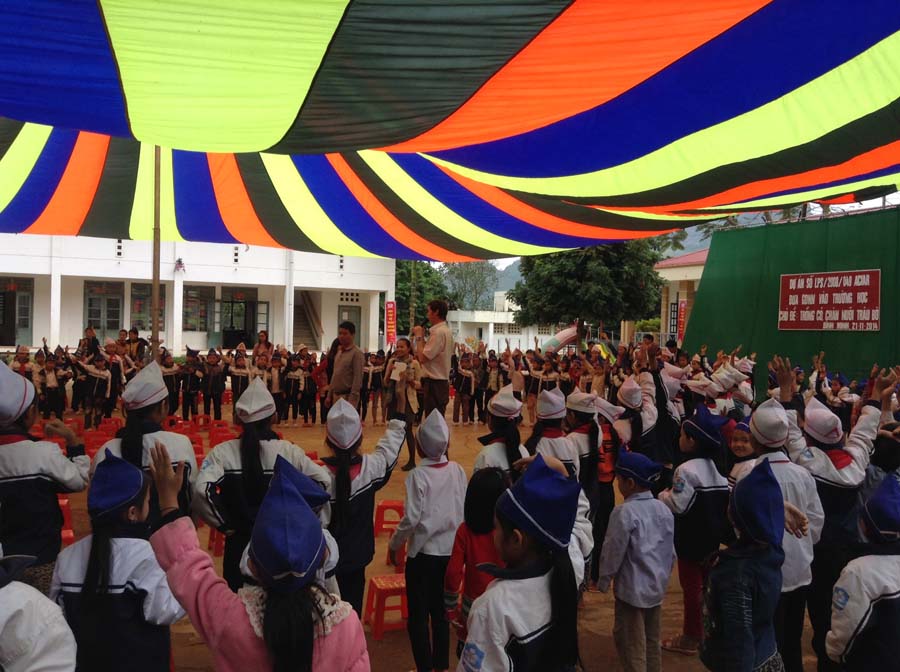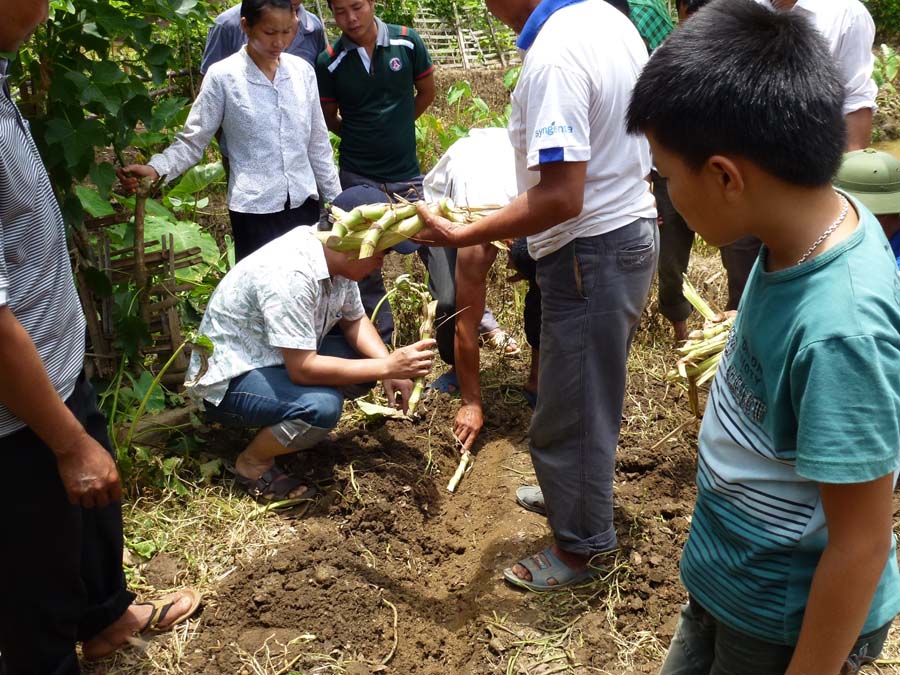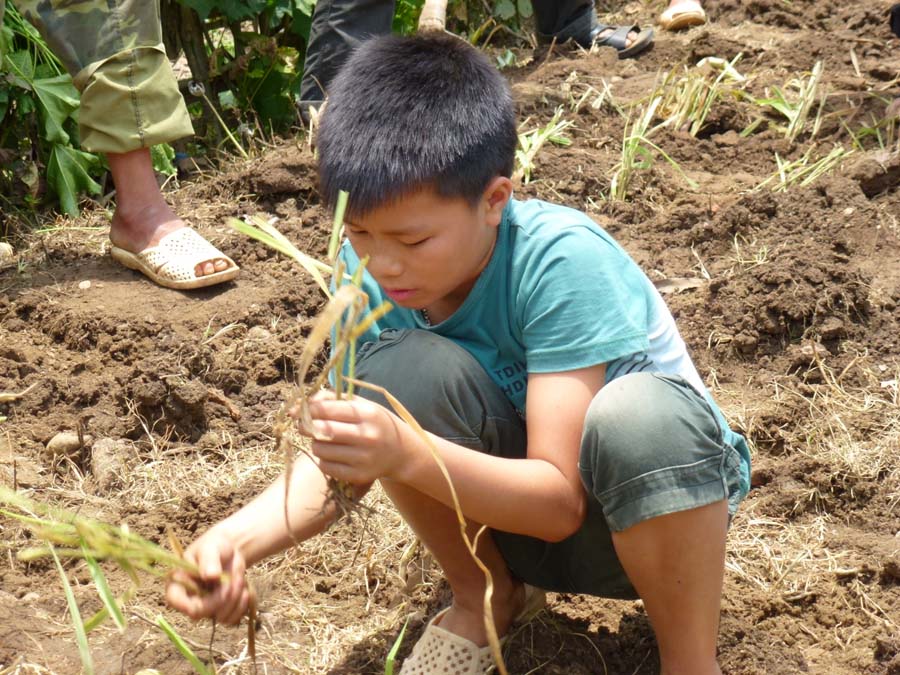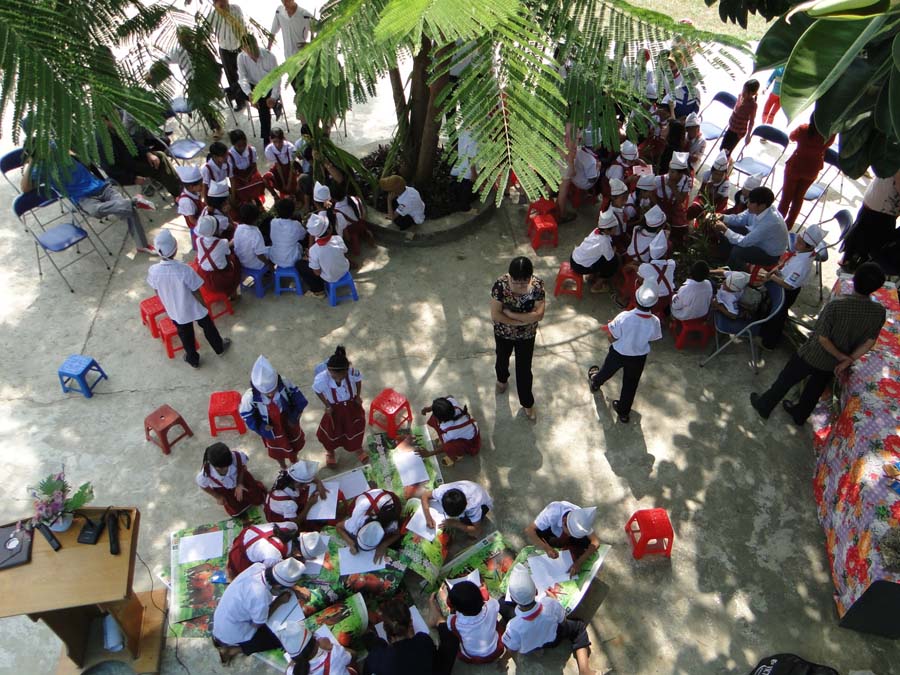Working with children
Dr Stephen Ives, Research Fellow, UTAS.
The underlying objective of conducting research for development in Asia, the pacific and Africa is to improve the health and wellbeing of women and children. Children are our future – are they not? But aren’t they also our present?
More often than not, children in the developing economies are involved in the day to day activities of a smallholder farming enterprise. However, up until recently our research endeavours have focussed on ‘farmer’ engagement and participation, which implies working with a senior member of the family to improve the productivity and profitability of the farm. After all, they are the decision makers and the gatherers and holders of information! I suggest that children are the new gatherers of information. Children of this modern and changing world are challenging the tradition of ‘learning from their elders’ by embracing technology and reengaging with the old adage that there is no such thing as can’t. How many times has a child successfully changed a setting on the mobile phone of an ‘older’ person, with barely any prior learning or knowledge?

No, it’s not a circus, just a lanky ex-pat (Stephen!) with a story to tell
In research, we need to use this flipped learning to empower communities in which we work. An example of this occurred in North West Vietnam after our research team conducted a two hour ‘learning’ activity about forage production with 60 students from a rural primary school – one child went home after school, told his father and within weeks 30 farmers wanted to know more.
It’s not everybody’s cup of tea to engage with young people. They can be a bit scary, but so can we. I’ve had the benefit of being involved with youth organisations, including the scouting movement, so working with young people is not so daunting. It has also enabled me to plan activities using what I would consider a standard community learning and development method.
- Firstly, break down the barriers with games and singing (if that works for you). But, remember they are watching you and will mimic your behaviour/response. So, smile and laugh and act like no-one is watching. Forget that you are an adult with (dare I say it) grown up responsibilities.
- Secondly, introduce your topic in an engaging way using tactile and visual methods.
- Thirdly, reinforce the learning with rotational activities that encourage a response from the participant.
- Lastly, consolidate learning with a summary, and maybe a roundup game and music to finish. The key is to keep it short, sharp and adaptable. Adaptability is the key. Children are, and we need to be as well.

“I watch how to plant”
Word had spread about the activity we ran, so, another community wanted us to replicate the program in their local primary school. Approvals were sought and plans were put in place. We were set to go at 8am, when we received word from the principal that the school was ready for us. “School?” we asked, as we had designed our program for 60 students aged 8 – 11 years. “How many students?” we continued. 360 was the answer, from kinder to grade 6, and we had 15 minutes to start. We spent 5 minutes in a spin, then launched into our program (now on steroids). It was most important to remain confident and engaged, and not let on that this was not what we had signed up for (to quoin a phrase). Our team did an amazing job and that activity was a success. It was followed by lunch with the teachers and toasts all round.

“I try it myself”
Children are the drivers of change. As researchers, we have two choices. Either get out of the way, or recognise the potential and jump up alongside. If you ask any parent in any part of the world in any demographic what they hope for – the majority would say a bright future for their children. It’s quite simple really – if you engage young people in research and meet their needs and aspirations – you have the parents as well. The door is now opened for collaboration – we all have a future.

School program activity stations


